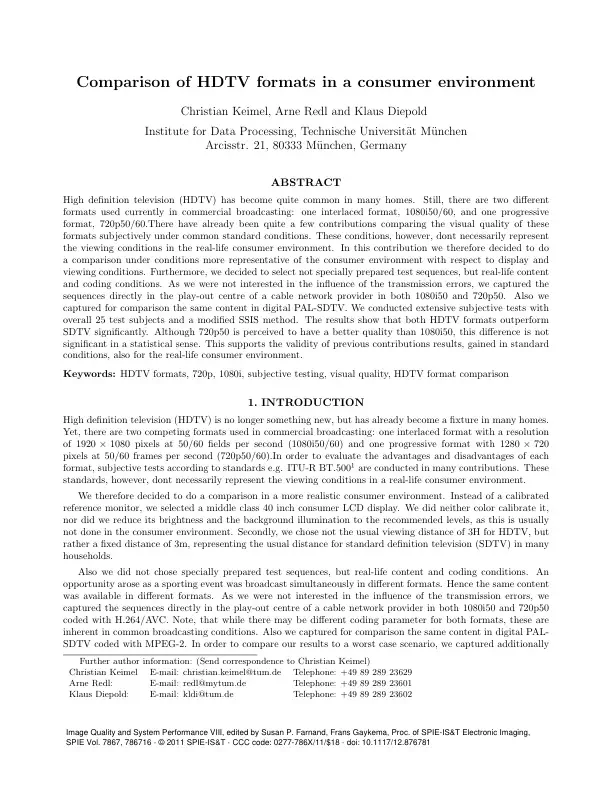
Abstract
High definition television (HDTV) has become quite common in many homes. Still, there are two different formats used currently in commercial broadcasting: one interlaced format, 1080i50/60, and one progressive format, 720p50/60.There have already been quite a few contributions comparing the visual quality of these formats subjectively under common standard conditions. These conditions, however, dont necessarily represent the viewing conditions in the real-life consumer environment. In this contribution we therefore decided to do a comparison under conditions more representative of the consumer environment with respect to display and viewing conditions. Furthermore, we decided to select not specially prepared test sequences, but real-life content and coding conditions. As we were not interested in the influence of the transmission errors, we captured the sequences directly in the play-out centre of a cable network provider in both 1080i50 and 720p50. Also we captured for comparison the same content in digital PAL-SDTV. We conducted extensive subjective tests with overall 25 test subjects and a modified SSIS method. The results show that both HDTV formats outperform SDTV significantly. Although 720p50 is perceived to have a better quality than 1080i50, this difference is not significant in a statistical sense. This supports the validity of previous contributions results, gained in standard conditions, also for the real-life consumer environment.